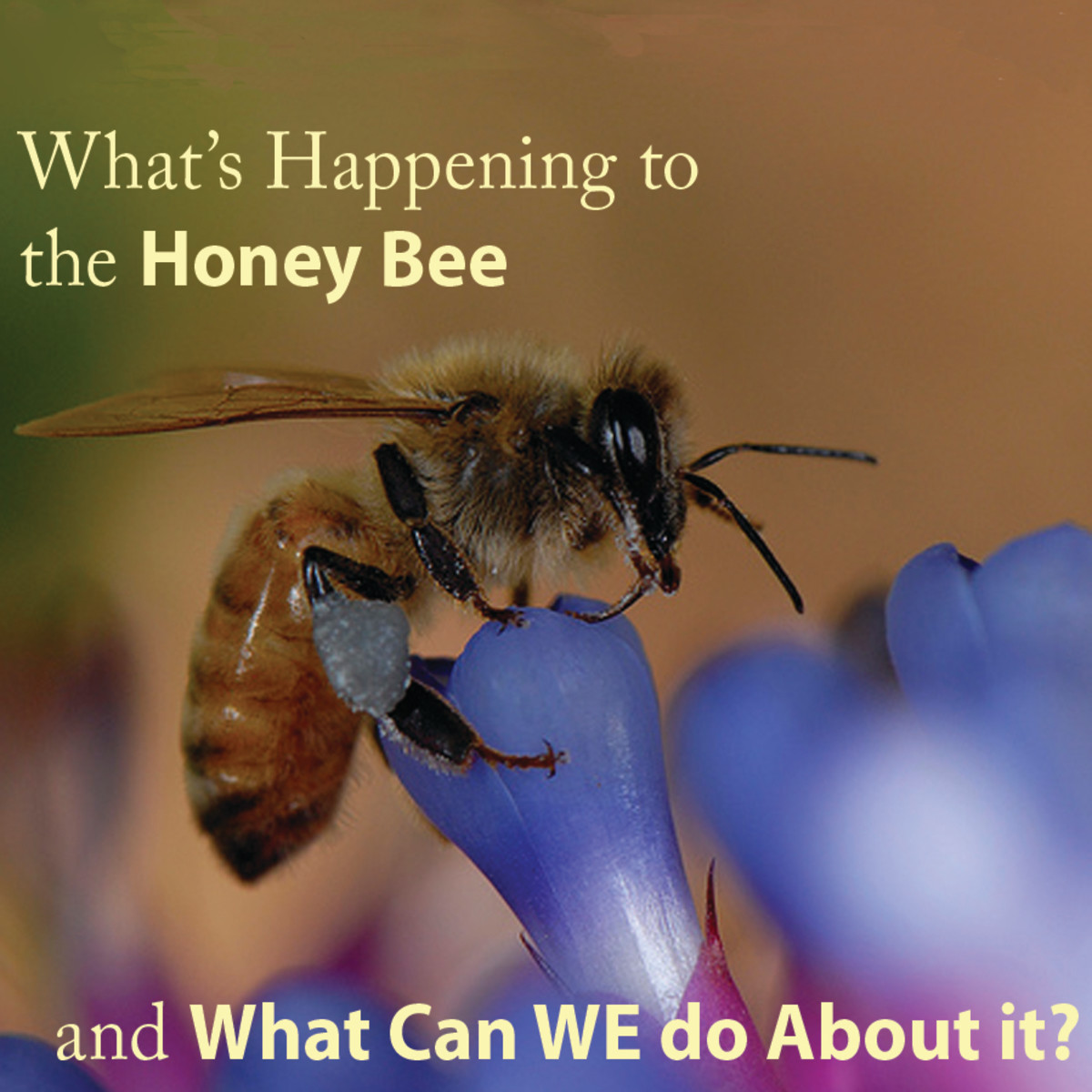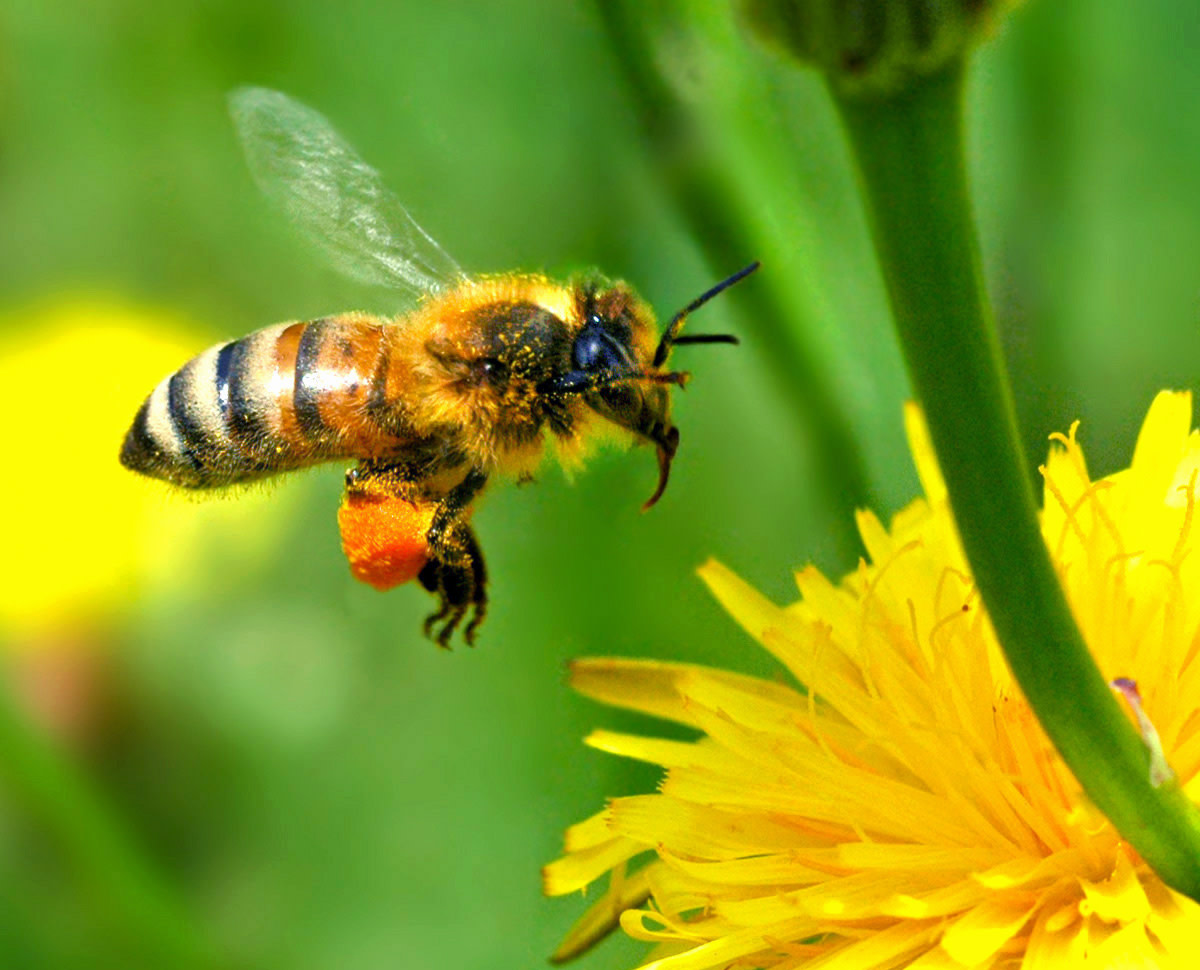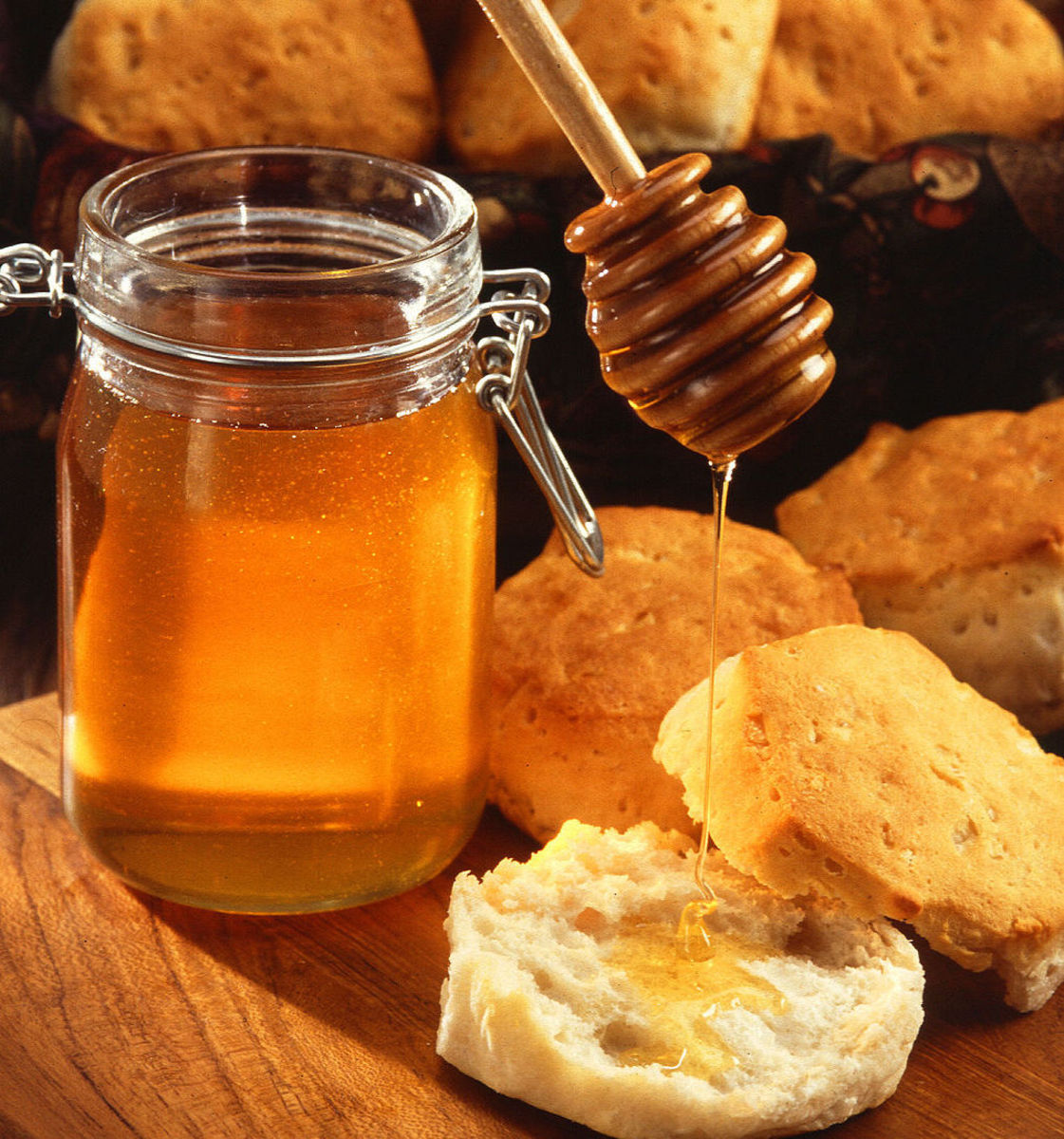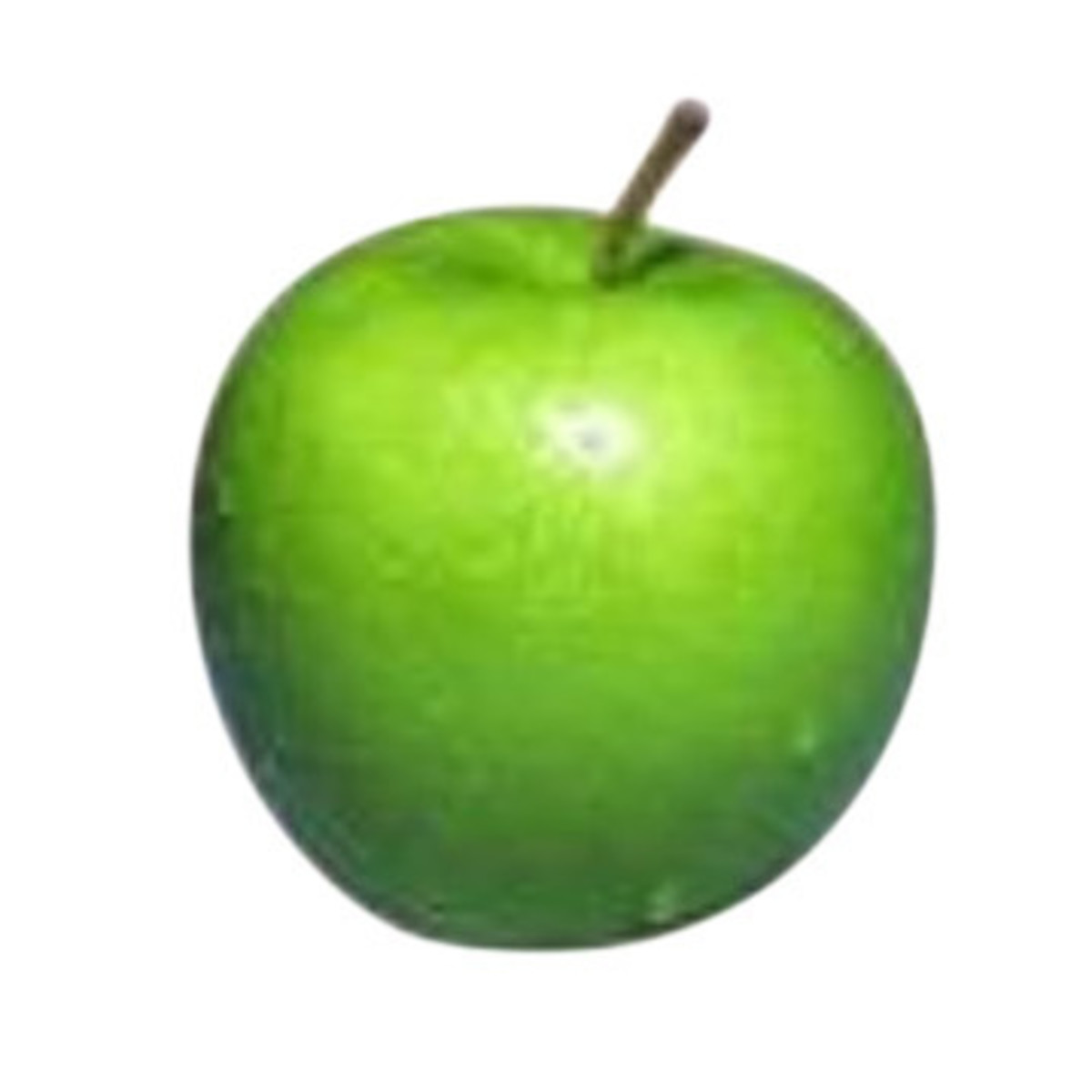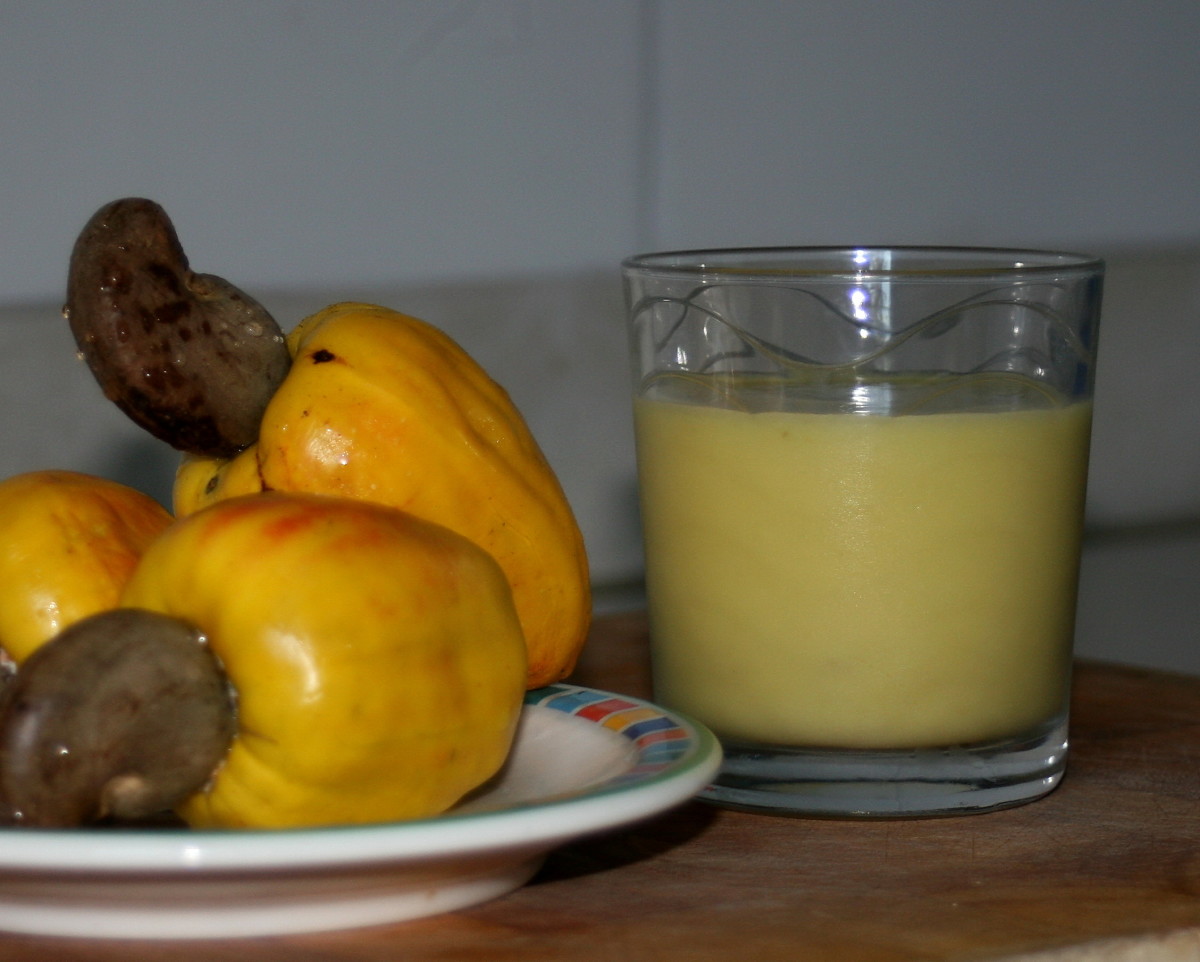Different Kinds of Honey, Honeybees, Uses, Color,Texture,Tastes and Health Benefits
Honey in a spoon
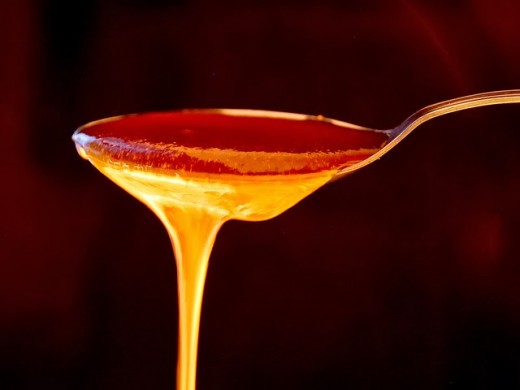
Health Benefits of Honey
Everyone loves the sweet delicious taste of honey especially in its purest form; honey generally is produced by honey bees as a readily available food source for its colony. The substance is very complex and is a derivative of nectar produced by a plants gland referred to as nectarines, the plant willingly offers the insects its nectar as a means of pollination and distribution of its seeds which greatly benefits both parties.
The high sucrose content in nectar is then combined with other sweeteners obtained in flowers and plants which the honey bee processes and changes into honey. The purpose of honey as a food source for the honey bees plays an important role in the development of the insect through the egg, larvae, and pupa and adult stages. Bees swallow, digest and regurgitate nectar with other elements to produce honey, the Apis is the true honey bee and not all bees are categorized as honey bees.
Male and female bees
Interestingly the sex of the bee is predetermined even before it is birth, the queen bees chooses which egg it wishes to fertilize or not, the unfertilized eggs develop into drones which are male called haploid while the fertilized eggs become workers and could be either infertile male and infertile females. The drones which are produced from unfertilized eggs are larger than the workers.
Honey bee on a purple flower
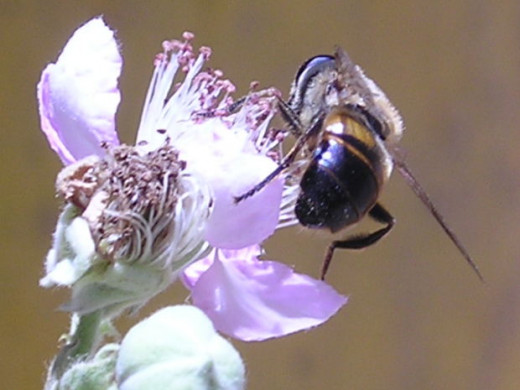
Mating and reproduction in honey bees
The honey bee colony or brood can have well over forty thousand female workers developed from fertilized eggs but are sterile female workers, the male drones are usually less than ten percent the female work force and could be between eight hundred to one thousand male drones developed from unfertilized eggs but very fertile . During a new queen mating flight she mates with several of the drones collecting the sperm in a special sac which she chooses to uses when laying eggs at her discretion.
The queen has longevity compared to her workers who live just a few months, she can manage several years- the signal of an aging monarch is the development of drones which show depletion in the sperm sac signaling to the workers that a new queen is needed. To accomplish this they single out a lucky larvae and feed it exclusively on royal jelly (I wander how that tastes) which develops into a young queen. At maturity the young queen swarms with the drones to build a new colony while the aged queen digs her way out of the colony leaving a new queen behind.
To effectively rule over her subjects the queen during her several mating flight way before she builds her dynasty has several encounters with fertile male’s bees and stores the sperm in a specialized organ known as the spermatheca, imagine women having this ability.
Honey beekeeping made easy
Honey types
Which honey extract do you like
The brood
The brood refers to all the members of a colony that is the egg, larvae, pupa and adult stages, the bee’s egg is a very tiny white grain like shape which is then placed in a cell, larvae and pupa stages characterizes the stages of development of the insect. The workers responsibility is feeding the larvae with a mixture of royal jelly, pollen and honey, in the case of the queen if the larvae is fed predominantly royal jelly the larvae is destined to be a queen. Other duties of the workers is defending the hive and cleaning the intricate cells.
Stages of development of honey bees
The queen bee stands alone and has no rival except female workers who assist the tender the larvae; they dutifully carry out their jobs which also includes foraging for nectar for the hive until the colony grows exceptionally large. The queen as a rule develops within sixteen days; the workers take about 22 days while the large fertile males the drones develop in twenty four days.
A man tending a bee hive
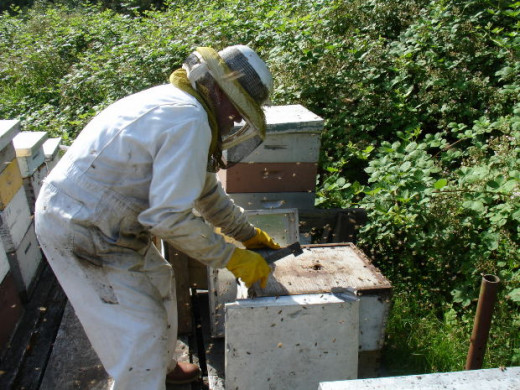
Health benefits of honey
Apart fro culinary application honey has been used far back as the medieval times to cure various ailments such as cough, sore throat, has been use to reduce the effect of allergies, is believed to be a heat stimulant. Other curative uses include the treatment of wounds, burns, sores, diabetic ulcers, used to reduce bacterial diarrhea and the prevention of dermatitis in breast cancer.
Honey also energizes is a natural anti bacterial agent and is a more healthy replacement to table sugar. Honey has been harvested and used by physicians, alternative medicine practitioners, can be found in some modern medicine like cough mixture, hydrogen peroxide can be found in medicine that reduces gastronomical disorder and is important in many traditional practices and religious occasions.
Summary
There are at least ten species of honey bees domesticated and used for honey production, bees in general number over fifteen thousand species and originate in Africa and southern Asia. They live in a colony usually comprising one queen, over forty thousand female workers and a few drones. They construct their cells out of bee wax and consume honey and pollen and store honey for the upkeep of the colony.
Health benefit of honey
The golden substance produced by bees in a complex mixture of nectar and sweet deposit consumed and processed by the bee is honey. The quality of the nectar predetermines the purity of the honey produced; high grade nectar equals high grade honey.
Honey Bees cell
The hexagonal cells are built one on top of each other in a close nit group where each grain of sand like looking egg hatches within three to five days. The bee hive is generally built as an enclosed and is a very resilient structure; the nest can easily be adapted from nature or preexisting structure and converted to their use. So some natural places used by bees include deserted caves, natural formed holes, hollowed out tree trunks, large hollow stems, beneath tree trunks or built from the scratch.
Bee keeper use domesticated bees which they introduce into special bee boxes where the bees colonize and develop their hives; they distinguish the queen with special dye markings and harvest the honey at the appropriate time.
Other bee nest locations
Tree tops, high rock crevasses, cavities in falling trees, and hollow trunks provide ideal conditions for colonization; the hive is structurally sound and well constructed, sometimes honey combs are built as parallelograms. Some spices of bees are ground level nesters while other prefer desolate difficult to reach places which offers them added protection and seclusion.
Different types of honey
Clover
| Alfalfa
| Avocado
|
|---|---|---|
pleasant aroma
| nice aroma
| pleasant aroma
|
mild taste
| light color, mild taste
| dark color
|
yellow, red, white color flowers
| purple flowers
| buttery taste
|
Top honey bees
Among the top honey producers is the Apis mellifera and the Apis cerana the Asian honey bee both species have been successful used for the production of honey, the eastern and western homey bee because of their less aggressive nature and high yield are preferred to the more aggressive cousins.
Honey bees make their cells in hexagonal form, the structure of the hexagonal shaped cells are made out of bees wax which is a tough resilient substance and the cells are constructed in a way that they are densely compacted so they can retain the colonies food source which is the pollen and honey. The hardened resin walls harbor honey combs attached to the walls like beef in a butcher’s cold room, storing the honey higher than the pollen reserve
A honey bee on a green flower
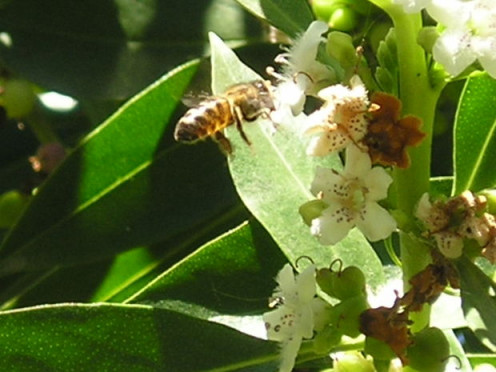
Composition of honey
Honey is made up of sugar, minerals and vitamins, and the acidic ph level which is about 3.2 to 4.5 prevents dangerous bacteria growth while antioxidants helps reduce free radicals from the substance. Further analyzing the chemical composition of honey we can break down the sugar, minerals and vitamins.
#Sugar
Glucose and fructose
#Minerals
Magnesium, Sulphur, potassium, chloride, phosphate, calcium, iron and sodium
#Vitamins
B1, B2, B3, B5, B6 and C
The composition usual has certain percentages which might differ slightly
Fructose 38. 3%
Glucose 30%
Maltose 7.2%
Sucrose 1%
Water 18.2%
Sugars 1.57%
Others 3.1%
Honey bee description
Like most insects the honey bee is segmented and is made up of head thorax and abdomen, the bee is covered in hair which in some regions is barbed and dense. The Apis mellifera Linnaeus comes in three shades of color which are black, brown and yellow, and the yellow and black as a rule covers the abdomen in an interchange of yellow and black stripes. The Apis comes in diverse sizes from the tiny manageable Apis Florae which is small in size compared to other species that are widely distributed in Asia especially southern Asia and can be traced back to an admirable ancient linage.
Other Apis
There is several other Apis such as the dangerously fierce cliff hangers Megapis that build their nests in tall trees, jagged cliffs and desolate open caves or the big giants the Apis dorsata found in large numbers in places like Indonesia. A properly domesticated verity is the common Apis mellifera which is considered a western European verity; it was introduced into Europe and is more suitable to tropical regions of Africa and has many variants and subspecies.
Apis cerana
The Apis cerana is regard as the Asian honey bee and has subspecies such as the Apis Japonica, Apis cerana Enderlin, Apis cerana Nuluensis and many more. The Apis japonica which can be referred to as the Japanese honey bee has its origin traced to Korean region. Some countries that domesticate them are Papua New Guinea, Japan, Malaysia and India.
Apis Mellifera
The Apis mellifera is known as the western honey bee they are good foragers, they are wide spread and native to Africa and Asia, they have over twenty five subspecies and have been extensively mapped. The workers duty is to feed the larvae and build the honeycomb, the worker female might either be infertile or fertile depending on what the colony requires that that point in time.
Killer bees
The African Killer bees are a hybrid mixture of two species, they are very tough dangerous and very aggressive. Known to be master foragers and good pollinators they cover very extensive ranges, are adapted to harsh tropical conditions and are known to be resilient against several diseases.
10 Uses of Honey
Honey is not only useful for medical applications it can also be used for various things some of which are listed bellow.
1 A substitute sweetener. Honey is a healthier substitute to table sugar because table sugar is usually highly processed while honey is a natural derivative that contains sucrose and fructose.
2 As an energizer. Honey contains glucose which we all know is an energizer; athletes use glucose to replenish their energy especially during sporting competitions.
3 Hair cream. The properties found in honey have been used in salons and can be found in certain hair creams because it is believed that honey repairs damaged hair and aids hair growth.
4 Soothes cough. Coughing can be reduced by sipping a table spoon full of honey, it soothes and lines the throat thereby reducing the cough.
5 Reduces burn sensation. If you get burnt by accident by quickly applying honey to the burnt area or skin reduces the burn effect and could save your skin and life.
6 Acne. House wives are known to use honey to fight acne, the effectiveness of this remedy is a little contentious but many people swear by it.
7 Beauty treatment. Honey is used as a beauty regime when it is inculcated into massage creams or used as a facial during beauty treatment; it keeps the skin moist and fresh looking.
8 Sore throat. Sore throat is easily soothed when a sick person drinks honey either raw or introduced into warm water which is then sipped.
9 Aids digestion. Tradition medicine practitioners use honey to reduce stomach pain and to help aid digestion.
10 Religious ceremonies. Some important religious ceremonies cannot be carried out without the involvement of honey.
Types of honey
We have established earlier that honey is a derivative of nectar and sweaters, bee’s process plant nectar by adding enzymes and moisture evaporation changing the constitution to produces their main diet honey. The honey is then stored in honey comps and capped in storage by applying bee wax.
Nectar used by bees for honey come from a variety of flowering plants ranging over four hundred, some of which are buckwheat, clover, goldenrod, firewood, alfalfa and many more.
Sometimes the bee combines different nectar to produce honey depending on the nectar source available to them; the source generally dictates the final products taste, aroma, texture and color. You can find colors such as golden yellow, yellow, brown, dark brown, water white even red, listed bellow are some unique honey.
Kinds of honey
Alfalfa
Nectar harvested from the alfalfa plants purple colored blossoms usually come out a pleasant light color has a pleasing yet mild flavor and can be considered top grade.
Blueberry
The blueberry flowers nectar when processed by the bees has a light shade of color is perfectly blended and can be said to have a well rounded aroma and flavor
Avocado
Bees that use the avocado plant to collect nectar usually make very rich dark colored honey that has an interesting buttery taste.
Buckwheat
The buckwheat plants nectar results in a full bodied dark colored honey famed by its strong antioxidant properties, the honey has been used in several medicinal applications.
Clover
The clover nectar when utilized by the honey bee gives a pleasant tasting honey that has a reddish color mild taste and nice aroma. The clove comes in several varieties so the color of honey can range from yellow, red, and white, golden.
Firewood
The firewood nectar has a lighter color than some and is harvested through the pink colored flowers of the plant.
Sage
Sage plant when the nectar is collected by the honey bee and processed it comes out with a light color, slow granulating honey.
Orange blossom
The orange blossom produces a mild flavored honey that has a delightful fresh scent and a light color.
Honey can have a long shelf life depending on the method used in preserving it, if the honey is refrigerated or preserved in an airtight container the honey can stay for several weeks without losing its freshness. The economic and health benefits of this special nectar cannot be quantified making honey a truly wonderful comodity.
Health benefits and uses of honey
- 10 uses for honey outside the kitchen | MNN - Mother Nature Network
Bees make it and we get to enjoy it. But honey is good for more than just sweetening recipes, here are 10 ways to use honey. - 10 Health Benefits of Honey | Care2 Healthy Living
Discover the health benefits of one of the oldest sweeteners on earth, plus some interesting trivia, some great recipes and a few cautions.
© 2014 femi

